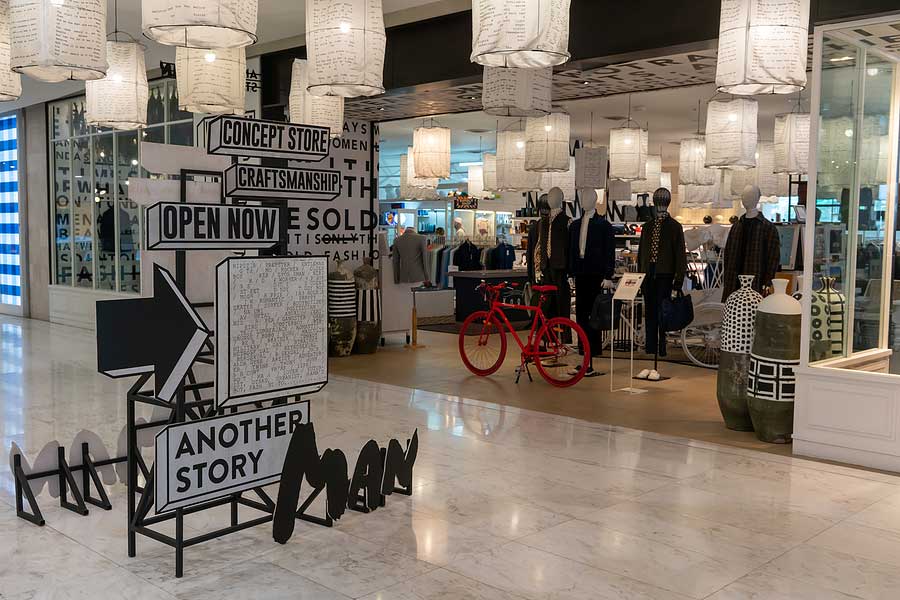Key Essentials for a Successful Retail Design
Design for Your Target Customers
Capture Attention With Visual Merchandising
Visual merchandising is the practice of arranging products and spaces to maximise their aesthetic appeal and draw attention. Investing in this can help you create a visually appealing space that captures customers’ attention and interests. It also provides an opportunity for customers to view and interact with your products. When done right, visual merchandising can also help in boosting sales.
Consider investing in lighting to create a more inviting atmosphere and highlight the best aspects of your products. You may even consider experimenting with interactive displays that customers can use to engage more deeply with the product and your store as a whole.
Take Into Account Store Layout
Organising the store layout can be daunting, but it is a critical component of successful retail design. Avoid overcrowding the store by allocating adequate space between displays and shelving units. Additionally, create defined walkways so that customers may easily move around the shop. Arranging products in such a way that customers will naturally traverse the length of the shop can also be beneficial. This will help customers to discover other products they may not have known about initially, which in turn could lead to increased sales.
When planning for a retail space, there are many elements that should be considered for an effective and successful store design. From having a design that is tailored to your target customers, to investing in visual merchandising, to creating a store layout that allows customers to navigate easily – it is essential for retailers to pay attention to detail in order to create a pleasant and profitable shopping environment. With guidance from experienced professionals, retailers should be able to craft an alluring store design that is optimised for customer engagement and sales.
Incorporating Technology Into Retail Design
The retail sector has experienced substantial disruption from technology, and as such, it is now crucial for retailers to incorporate tech into their store design. Examples of this include digital signage that can be used for advertising purposes; interactive displays that enable customers to compare products or view detailed information; virtual/augmented reality-enabled experiences that allow customers to try on clothes without actually putting them on; and facial recognition for security, to name a few.
The retail space of the future is technology-driven and retailers should consider investing in such solutions to remain competitive and keep up with customer needs. Incorporating tech into your retail design can help you create an engaging shopping experience that would stay with customers long after they leave your store.
There are a number of key essentials for a successful retail design. These include:
- A clear and inviting entrance: The entrance to your store is the first thing that customers will see, so it’s important to make a good impression. Make sure that your entrance is well-lit and inviting, and that it clearly identifies your store.
- A well-organized layout: The layout of your store should be easy for customers to navigate. Make sure that the aisles are wide enough for customers to move around comfortably, and that the products are easy to find.
- Ample signage: Clear and concise signage is essential for helping customers find what they’re looking for. Make sure that your signage is easy to read, and that it is prominently displayed throughout your store.
- A comfortable and inviting atmosphere: The atmosphere of your store should be comfortable and inviting. This means using soft lighting, playing calming music, and displaying attractive merchandise.
- High-quality fixtures and fittings: The fixtures and fittings in your store should be high-quality and well-maintained. This will create a positive impression for customers, and it will also help to extend the life of your fixtures and fittings.
- A clean and tidy environment: A clean and tidy environment is essential for creating a positive shopping experience for customers. Make sure that your store is clean and tidy, and that there is no clutter or mess.
- Friendly and knowledgeable staff: Friendly and knowledgeable staff can make a big difference in the customer experience. Make sure that your staff are friendly and helpful, and that they are knowledgeable about the products you sell.

